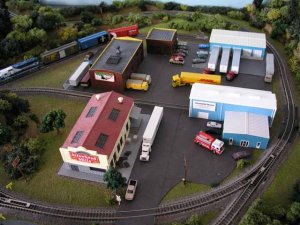Pitchwife said:...The main industry will be a full service recycling plant that takes in raw materials (ie. junk), seperates and processes it, stores it and ships it out to industrial customers....
That sounds like a good idea, Clark! :thumb:
I had an industry something like that on a switching layout I built...
The idea started out because I had some old engines that didn't run, & some old freight cars that had broken stirrup steps, couplers, etc, & I thought it would be cool to have a scrapyard for old RR equipment...then it evolved into a scrapyard that received all kinds of srap metal in gondolas...Then I incorporated that into a foundry complex, with sort of the scetchy idea that this could be an industry that received scrap metal, & then re-forged it into such things as machine parts, auto parts, tools & hardwre, which would then be shipped out in boxcars, & heavy flatcar loads...They would also receive tankers with chemicals needed for processing, & coal to fuel the forge...


